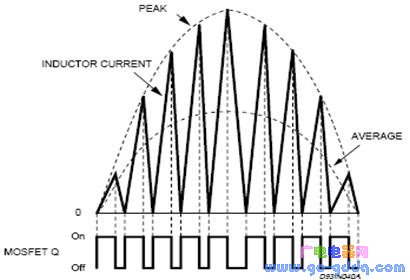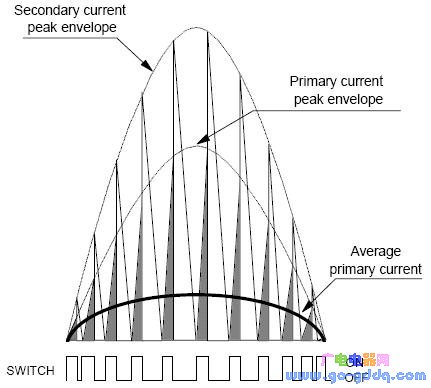The L6562 operates in peak current mode, where the output voltage feedback is multiplied by the sensed input voltage to determine the peak inductor current. This results in a high-frequency triangular waveform that is enveloped by a 100 Hz sinusoidal signal. After filtering, the input current becomes a sinusoidal waveform that is in phase with the input voltage, theoretically achieving a power factor (PF) of 1.


To reduce costs, the L6562 is often used in a flyback topology to implement single-stage PFC. The block diagram is shown above. Its operation is similar to the boost topology, but instead of using a secondary-side feedback, it multiplies the secondary output voltage with the primary input voltage to control the peak current on the primary side.
This process creates a high-frequency triangular current waveform that is again enveloped by a 100 Hz sine wave. After filtering, the input current becomes a sinusoidal waveform aligned with the input voltage, aiming for a PF close to 1.

From the figure, we can observe two key points:
a. The transformer operates in Discontinuous Conduction Mode (DCM).
b. The primary current is intermittent, meaning it only flows during the Ton period of each switching cycle. As a result, in a flyback topology, achieving a theoretical PF of 1 is not possible due to the nature of this current waveform.
Despite this limitation, the L6562 still provides an efficient way to improve power factor in cost-sensitive applications. Understanding these operational characteristics is essential when designing or selecting components for such power conversion systems.
Telecom Battery Cabinet,Equipment Rack,Outdoor Electrical,Battery Cabinet
Guangdong Yuqiu Intelligent Technology Co.,Ltd , https://www.cntcetltd.com